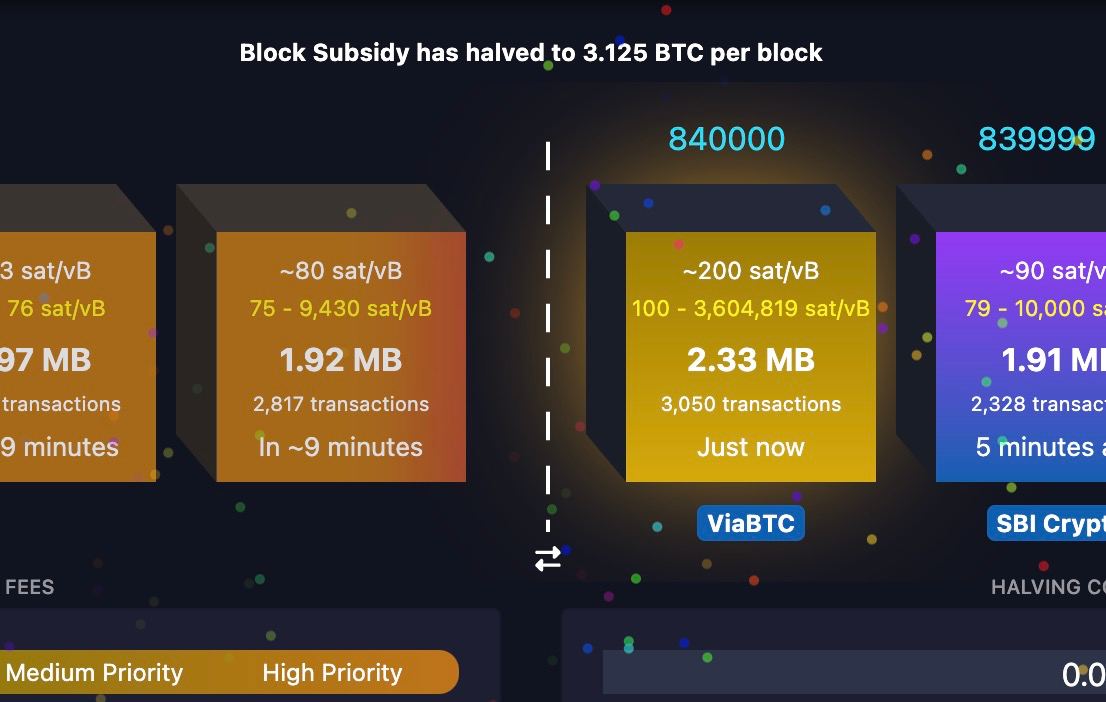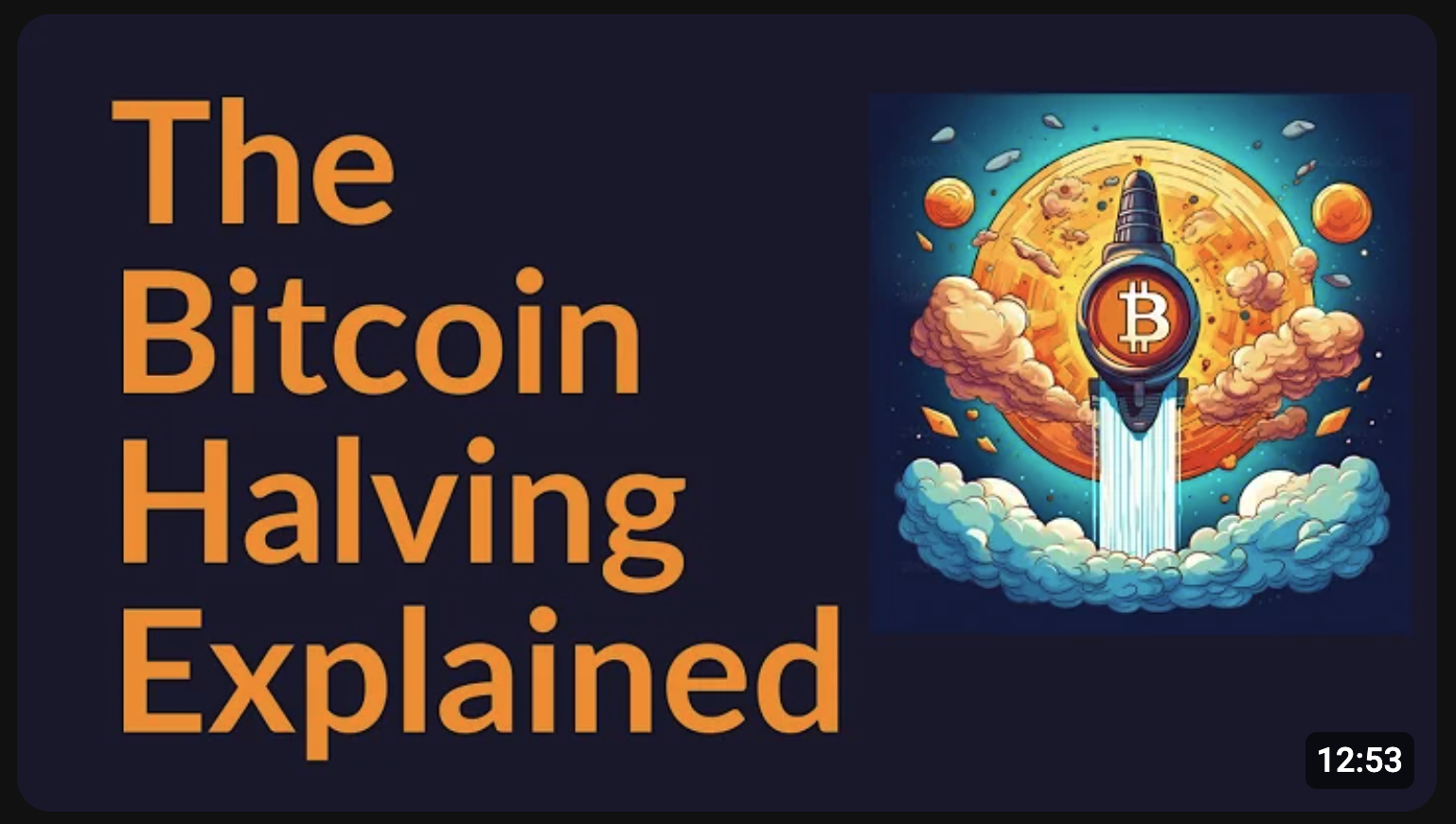Bitcoin Halving


The halving is an event which reduces the issuance rate of bitcoin by half every four years. Bitcoin’s issuance schedule is precisely defined by an algorithm in Bitcoin’s code. This algorithm allows a certain amount of new bitcoin to be minted in each block, as compensation for the miner of the block.
This new bitcoin is called the block subsidy, and at Bitcoin’s inception, it was 50 BTC per block. However, the subsidy is cut in half in an event called the halving, which takes place every 210,000 blocks—roughly every four years. This process will continue until the subsidy reaches zero, by which time over 7 million blocks will have been mined across 34 halvings.
On April 19, 2024, the Bitcoin network processed block 840,000, marking another ~4-year halving event in bitcoin's history and a transition to a block subsidy of 3.125 BTC from 6.25 BTC. After another 120,000 blocks (likely sometime in 2028), the subsidy will halve again to 1.5625 BTC.
The Bitcoin halving introduces a supply shock in the sense that fewer new bitcoin will be issued each block going forward (but demand will likely increase or remain the same). The last halving event will occur around the year 2140, meaning all 21 million BTC will be issued into the circulating supply (and no more beyond that). At that point, miner revenue will come entirely from transaction fees associated with each block because they will no longer be able to issue themselves any new coins.
More Resources
- Bitcoin Halving 2024: How It's Different This Time, Myths Debunked, Bitcoin Bugs, and More - Andreas Antonopoulos on YouTube
- How does the bitcoin code define its 21 million cap? - Unchained
- Bitcoin Halving- Impact, Implications and Insights | Amberdata
- What is Bitcoin Halving? Explained by CoinGecko - YouTube



